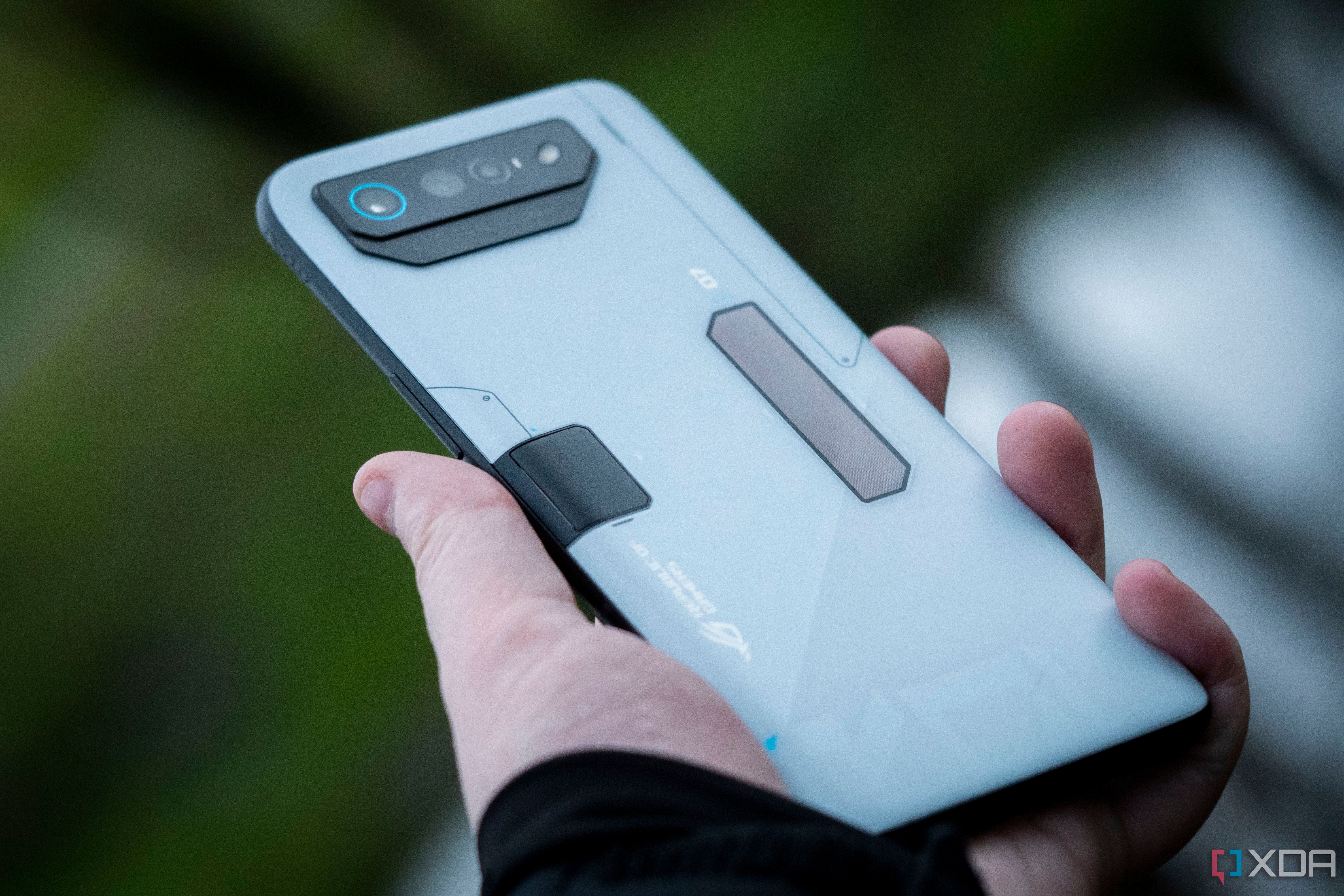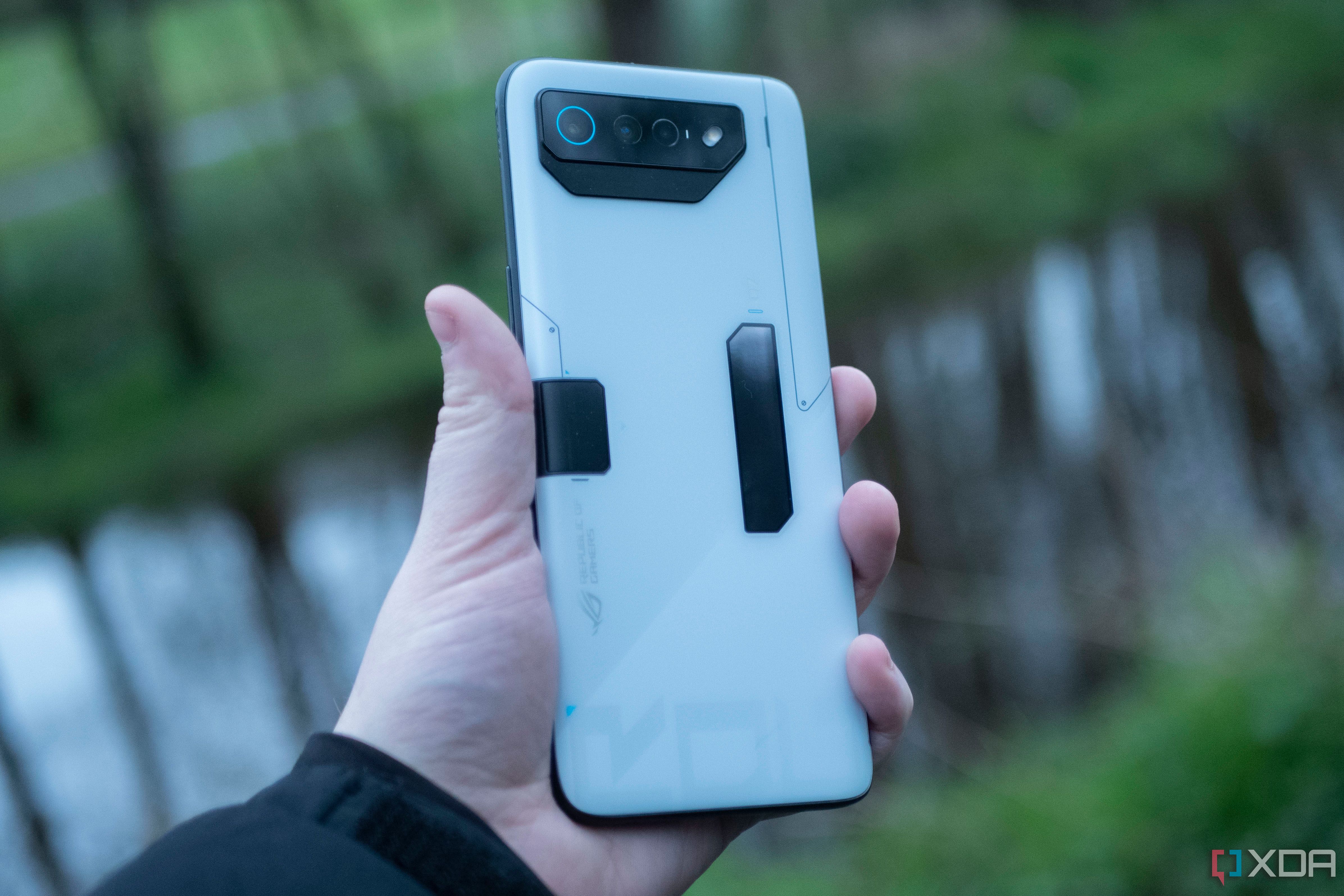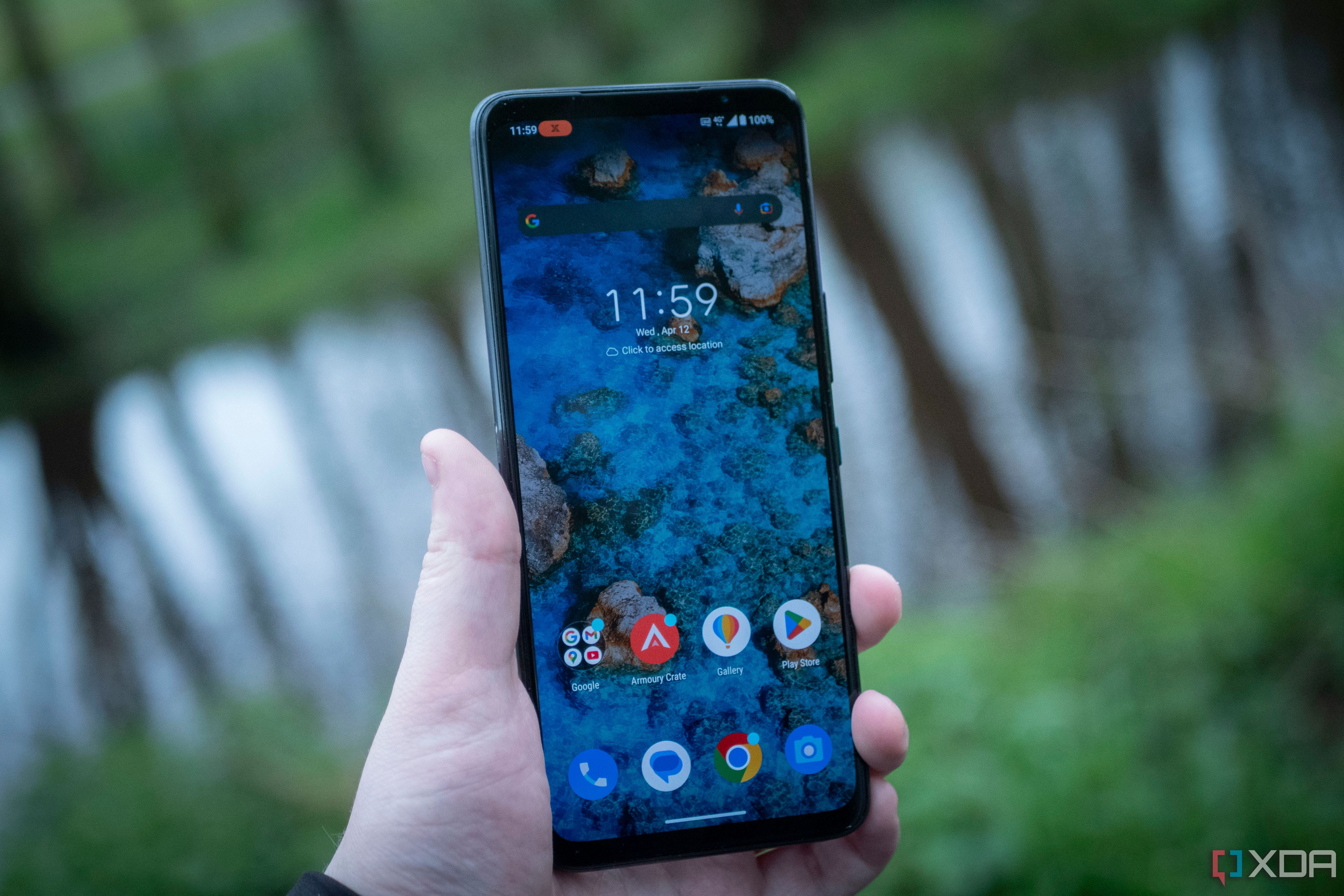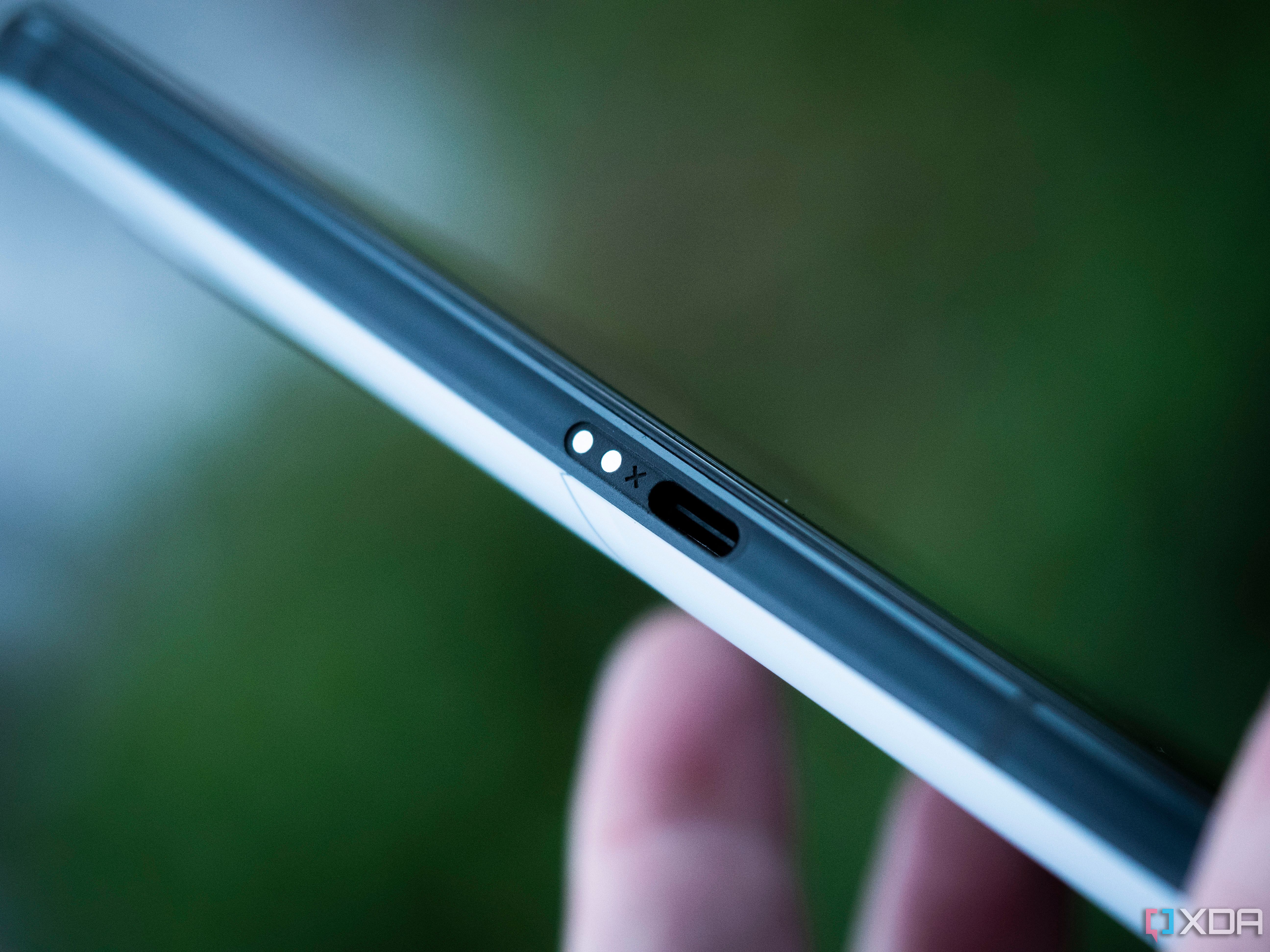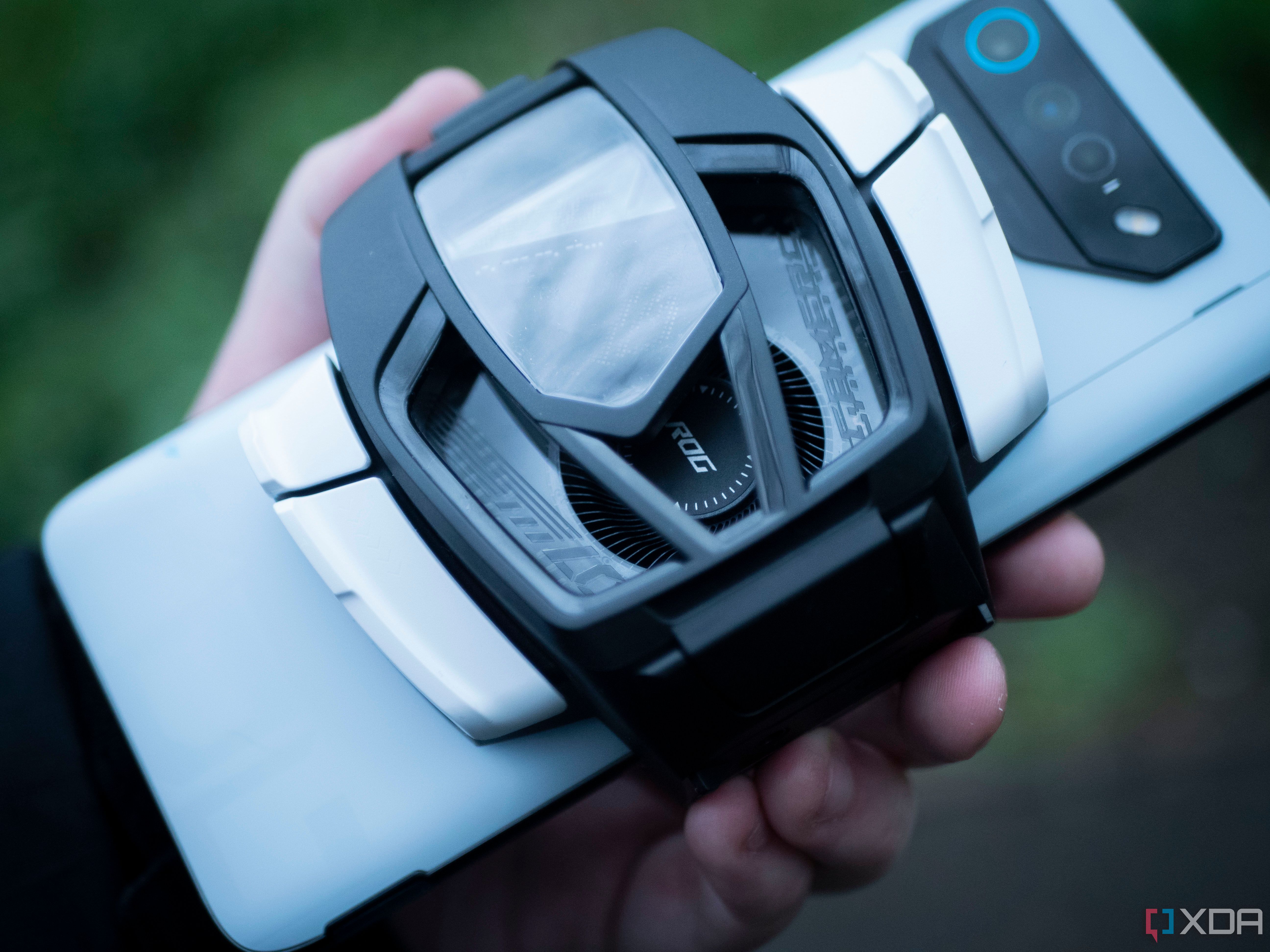Quick Links
When it comes to gaming phones, Asus' ROG series is probably the cream of the crop. They're not the most popular compared to conventional smartphones, but anybody who's serious about mobile gaming has heard of them. Past devices like the Asus ROG Phone 6 Pro went all out on specifications, and the ROG Phone 7 Ultimate is no different. There's a Snapdragon 8 Gen 2, a headphone jack, dual front-facing speakers, and even a second USB-C port.
This is primarily a gaming phone, but as is always the case, they tend to be great for regular users, too. A great display for gaming means a great display in general. Fast performance? Great for gaming but also fantastic for heavy social media usage. The only thing that doesn't matter as much for mobile gamers is the camera, so that's often a weak point. It's fine on the ROG Phone 7 Ultimate, but undoubtedly a downgrade.
If you want one of the best phones on the market that money can buy (sans the camera), then the Asus ROG Phone 7 Ultimate might be worth your money. It might be pricey, but it has nearly everything you could ever want in a phone. It's a fantastic smartphone with a lot to love.
About this review: XDA received the ROG Phone 7 Ultimate for review from Asus. The company had no input into the contents of this review.
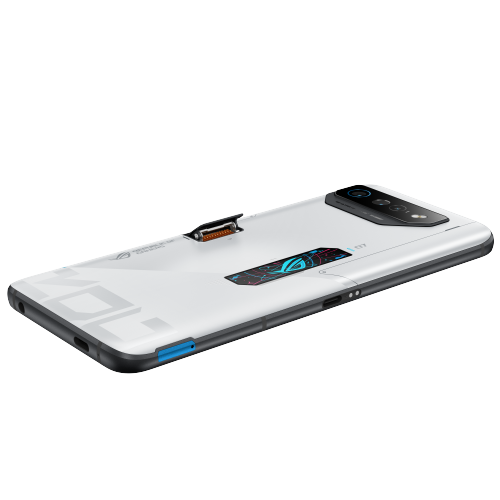

Asus ROG Phone 7 Ultimate
The Asus ROG Phone 7 Ultimate is one of the most powerful smartphones that you can buy on the market in general, and it packs everything and the kitchen sink into one device.
- Brand
- Asus
- SoC
- Snapdragon 8 Gen 2
- Display
- 6.78-inches 165Hz 1500 nits 2448 x 1080 display
- RAM
- 16GB LPDDR5X
- Storage
- 512GB UFS 4.0
- Battery
- 6,000 mAh
- Ports
- 2x USB-C, 1x 3.5mm headphone jack
- Operating System
- Android 13
- Camera (Rear, Front)
- Single front-facing, triple rear-facing
- Front camera
- 32MP pixel binned to 8MP
- Connectivity
- Wi-Fi 7
- Dimensions
- 173mm x 77mm x 10.4mm
- Colors
- Storm White
- Display type
- AMOLED
- Weight
- 239g
- IP Rating
- IP54
- Price
- 1399
- Micro SD card support
- No
- Everything you could ever need in a smartphone
- Extremely powerful
- Innovative cooling
- Pricey
- Subpar camera
Asus ROG Phone 7 Ultimate: Pricing and availability
The Asus ROG Phone 7 Ultimate is available for preorder in Europe and Taiwan today. It costs €1,399 (£1,200) and is available with 512GB of UFS 4.0 storage and 16GB of LPDDR5X RAM. It's available from the Asus online store and other partners.
Design and display: A gaming phone without the gaming phone aesthetic
The Asus ROG Phone 7 Ultimate is a gaming phone that looks a bit like a gaming phone, but not overly so. There's some accenting and branding across the body, but, by and large, it doesn't necessarily scream "gamer." The worst example of the gamer aesthetic shining through is via some of the preconfigured animations on the back display.
You've probably already noticed that the Asus ROG Phone 7 Ultimate looks more or less the same as last year's model. It's so similar that older peripherals like the Kunai GamePad 3's holder for the ROG Phone 6 and the AeroActive Cooler 6 will actually fit, even though Asus says they aren't officially supported. These similarities aren't a bad thing, but it's clear that Asus has settled on an identity.
The display is unique, and it's something I'd love to see on other phones.
As for why those peripherals aren't supported officially, my theory when it comes to the Kunai GamePad is that the new AeroActive Cooler 7 that comes in the box is a little bit larger than its predecessor and doesn't sit flush with the back of the phone when the GamePad 3's holder is in use. It makes sense why the company wouldn't want to advertise it as compatible.
What is unique here is the display. You can stick any animation you want on it, and there are plenty of pre-made animations that can be enabled in different scenarios. It's fun, and something I'd love to see on other phones. Maybe it's not your cup of tea, but you can disable it if you want to or even just use it as a notification ticker.
The ROG Phone 7 Ultimate's display also does something most other flagships don't: remove the punch hole. There's no notch, either. That's partly why the phone is so big, as the display is completely unimpeded. The front-facing camera is above the display, along with a notification LED. You also get one of the dual front-facing speakers up there, so the entire setup is pretty sophisticated.
It's an excellent display as well, going up to 165Hz and pushing full HD resolution. It's not 1440p, but that's a lot more graphically intensive to render. More serious gamers typically prefer higher frame rates over higher graphical fidelity to ensure better performance, and there are increasingly diminishing returns when it comes to a smaller display if you're increasing your resolution from 1080p. With a 165Hz refresh rate, freeing up any overheads possible is vital. You can change the refresh rate to be as low as 60Hz (which unlocks a DC Dimming option), but it's not an LTPO display.
It also features face unlock and an under-display optical fingerprint scanner. Both options work well, though face unlocking won't work with a mask on.
The left side of the phone has a USB-C port beside a set of pogo pins, which helps maintain a connection with the AeroActive Cooler 7. You can plug other accessories into this second USB-C port, too, since it supports HDMI output. The bottom-firing USB-C port is just a standard port, and there's also a 3.5mm headphone jack.
Just like with the Asus ROG Phone 6 Pro, the Phone 7 Ultimate has the company's AirTriggers. These are ultrasonic zones on the side of the phone that can be used to detect various inputs and can be assigned to actions in games through touch mappings. You can also use them throughout the system, and, for example, they can enable a squeezing motion that you can use normally, or you can enable a long squeeze or a short sweep, among other things.
Finally, there's the haptics, which just feel excellent in hand, just like the 6 Pro. Typing is a great experience, and you won't miss phone calls or notifications when the phone is in your pocket if you're relying on vibration. Asus did a great job here; they're punchy without feeling over the top, and they avoid feeling "mushy" like with other phones.
Performance: Perfectly designed for gaming
The entire point of the Asus ROG Phone 7 Ultimate can be summed up in one word: gaming. Pretty much everything here was designed for how it would affect the gaming experience, and obviously, performance is paramount. This phone has the fastest UFS 4.0 storage (and a lot of it), 16GB of LPDDR5 RAM, and the most powerful chipset at its heart — the Qualcomm Snapdragon 8 Gen 2. This is the fastest Android smartphone on paper, and in reality, it matches that experience.
The Snapdragon 8 Gen 2 features an improved Qualcomm Kryo CPU, with a Cortex-X3 prime core clocked at 3.19Ghz, two Cortex A710 performance cores and two Cortex A715 cores all clocked at 2.8GHz, and three Cortex A510R1 efficiency cores clocked at 2.0GHz. This is a fast chipset, one of the fastest on the market, with one of the best mobile GPUs that you can get. In other words, it's perfect for gaming.
This is a fast chipset, one of the fastest on the market, with one of the best mobile GPUs that you can get.
With that kind of power, the phone is every bit as impressive as you'd expect. Efficiency is up to snuff too, and it's just an all-around impressive device. Any modern Android game runs flawlessly or near flawlessly, with even Genshin Impact even yielding great performance. Emulation is impressive too, and some of the most demanding processing you can put a smartphone through. Games via AetherSX2 or Dolphin Emulator run very well, even with an upscaled internal resolution.
CPU Throttling Test
First, we ran the CPU Throttling Test, which repeated a simple multithreaded test in C for 30 minutes. The app charts the score over time, so you can see when the phone starts throttling. It's essentially a test that can measure the sustained performance of a chipset. While the phone does heat up, it's not unbearably hot and is perfectly usable even at the hottest that it achieved.
With the AeroActive Cooler attached, I noticed as well that the ROG Phone 7 Ultimate did perform better than you would expect. It achieved a maximum of 386 GIPs. Without the cooler, though, it throttles a decent bit more, which is to be expected. Even without the cooler, there's only a 5% in difference, which is wild to even think about.
Geekbench, 3DMark Wild Life Extreme, and Androbench
Geekbench is a CPU-centric test that we all know and love that uses several computational workloads. The score breakdown gives specific metrics. 3DMark Wild Life Extreme tests the GPU, and AndroBench tests the storage speed of the phone.
We used both Geekbench 5 and Geekbench 6 to test the ROG Phone 7 Ultimate, and the results show that this is one of the most powerful devices on the market. When it comes to Wild Life Extreme, it scored 3,738 as its highest, with 3,729 as its lowest over a period of ten runs. I used the AeroActive Cooler 7 when I ran that test, and it's an impressive performance to sustain. While I would normally test a device without any additional peripherals that keep it cool, the AeroActive Cooler 7 comes in the box and would be a normal device for users to have when playing games.
When it comes to storage speed, it's no surprise that the UFS 4.0 storage that's included is some of the fastest we've ever tested. Games and apps will launch quickly, the phone will turn on super fast, and storage speed will basically never be an issue.
Asus AeroActive Cooler 7
The Asus AeroActive Cooler 7 comes in the box with the 7 Ultimate, and it's a nifty piece of tech that's every bit as good as its predecessor and then some. It's a bit bulkier, but it also has a number of improvements over the previous version. For starters, it maintains a connection with your phone via two pogo pins that allow for a more consistent connection, but it also has a 3.5mm audio jack and a much better stand this time around.
The reason the audio jack is a big deal is that when you use your phone in landscape with the cooler plugged in, your hand will cover the headphone jack. With the cooler, though, you essentially add a headphone jack that's not in the way.
However, the AeroActive Cooler 7 has an even better trick up its sleeve: the built-in woofer that adds bass to your smartphone's audio. The most analogous example I can find of speakers that sound like this is with the M1 MacBook Pro. The speaker adds just enough depth that it leapfrogs any other smartphone that I've used when it comes to the audio experience.
From our testing, it's clear that the cooler helps with sustained performance over time. Our GPU testing especially revealed with 3DMark's Wild Life extreme that there is basically no difference between the first run and the last run, and the same with our CPU Throttling Test by the end of the test.
Asus' X-Mode
Asus' X-Mode is a feature that aims to maximize performance, and you can enable it at any time. It reduces thermal throttling and activates other features that can affect or improve your gaming experience. For example, you can have it disable background syncing, automatically enable HyperFusion, or automatically activate dual-band Wi-Fi. What I found interesting was that it defaulted to enabling the 144Hz screen refresh rate rather than 165Hz. So until I disabled it, entering X-Mode would actually reduce my screen refresh rate. It's an odd quirk, but not a big deal since you can change it.
It might be pricey, but it has nearly everything you could ever want in a phone.
The introduction of dual-band Wi-Fi is interesting. There are very few use cases where it will actually help the end user. It can't increase ping, as each packet will be sent via a single route. Sending over multiple routes isn't possible as packets would need to be split up, so it's likely that your phone would simply stick to 5GHz for the lower latency.
As for increasing bandwidth, 5GHz Wi-Fi offers significantly higher bandwidth over 2.4GHz. I have gigabit internet, and without dual-band Wi-Fi enabled, I get 44Mbps over Wi-Fi. With it enabled, I get 71Mbps. I sometimes get a much lower score when I enable the feature versus disabling it. It's completely inconsistent, which I can only imagine might be related to the fact that it's switching between the two connections. As an aside, this device seems to have performance issues with Wi-Fi.
In short, your mileage may vary depending on your network conditions. It hasn't really changed anything for me, and I'd rather leave a feature like this off in case it messes with the stability of my connection when playing games or when I'm on a call.
Battery and charging
As is the case with every Snapdragon 8 Gen 2 device released this year, battery life is phenomenal. With X-Mode enabled and the AeroActive Cooler plugged in, the battery does drop quicker than you'd expect, but it's still manageable. I'll frequently get five to six hours of screen time minimum with my heavy usage. As for charging, it comes with a 65W USB-PD-compliant charger, meaning not only do you have quick charging, but the included plug will also quickly charge other devices too.
Camera: Not as important
Being a gaming phone, you probably don't care about the camera as much. Asus packs the Sony IMX766 50MP sensor as a primary shooter, a 13MP ultra-wide, and an 8MP macro camera. There's no dedicated telephoto option here, but Asus uses the 50MP sensor to shoot at 2x lossless in bright light situations. When it's dark, it turns to digital zoom.
While it's not the best camera out there (and there are much better options available), I feel like most people buying a gaming phone will be happy about it.
I've included a Flickr album below of photos that you can check out for photo samples from this device.
Software: Surprisingly simple
Asus' software differs from much of the competition in that it feels pretty barebones, to the point that I've referred to this as one of the closest experiences to a Google Pixel that you'll get. It's not that it's lacking in features — in fact, quite the opposite. It's that it does a great job at hiding them away out of sight without making them impossible to find.
When it comes to gaming phones, I'm used to the over-the-top gamer UI that those companies frequently pack, and I was amazed to learn that that wasn't the case here. In fact, ZenUI is an incredibly tame implementation of Android 13 with some genuinely useful features. You can opt for a gamer-y icon pack aesthetic at setup, but Asus lets you water that down to a more regular-looking icon set if you want to.
There were a couple of features that stand out to me, though and did with last year's model too. Asus has surfaced a couple of options from developer options that are accessible through normal menus, including animation speed changing and codec choosing for Bluetooth earphones. Both of these are features that normal users may want to take a look at (especially animation speed), so it totally makes sense to surface these for normal users to take a look at.
Software updates are the biggest downside of this phone. Despite the incredible hardware specifications thrown at it, it's a shame that Asus will only support it with up to two major Android platform updates. With many companies extending that support to three or even four years of updates, Asus has stagnated and only stuck with two.
There's a lot of simplicity I can appreciate here, and it's a great implementation of software that doesn't get in the way of your gaming.
Should you buy the Asus ROG Phone 7 Ultimate?
You should buy the Asus ROG Phone 7 Ultimate if:
- You want a gaming phone with the best of the best hardware
- You want no compromises in your gaming experience
- You want the best audio in a smartphone
You shouldn't buy the Asus ROG Phone 7 Ultimate if:
- You care about camera quality
- You're price-conscious
If you're serious about mobile gaming, there really isn't another device that I can recommend. The Asus ROG Phone 7 Ultimate is super fast, super fluid, and you'll have the best mobile gaming experience on any smartphone right here.
The best thing about this entire experience is that Asus retained what worked. They didn't change it up for the sake of changing it; there was a solid foundation to build off of and that's what the company did. This is how you do a sequel to an-already impressive phone, especially when the biggest improvement will come from a chip bump. Even then, the jump from the Snapdragon 8 Plus Gen 1 to the Snapdragon 8 Gen 2 isn't as large as one may think.
It costs a lot and it cuts back on the camera, but if you're a gamer that just wants to play on the go from the comfort of your smartphone, this is simply a no-brainer.

Asus ROG Phone 7 Ultimate
The Asus ROG Phone 7 Ultimate is one of the most powerful smartphones that you can buy on the market in general, and it packs everything and the kitchen sink into one device.
- Everything you could ever need in a smartphone
- Extremely powerful
- Innovative cooling
- Pricey
- Subpar camera

